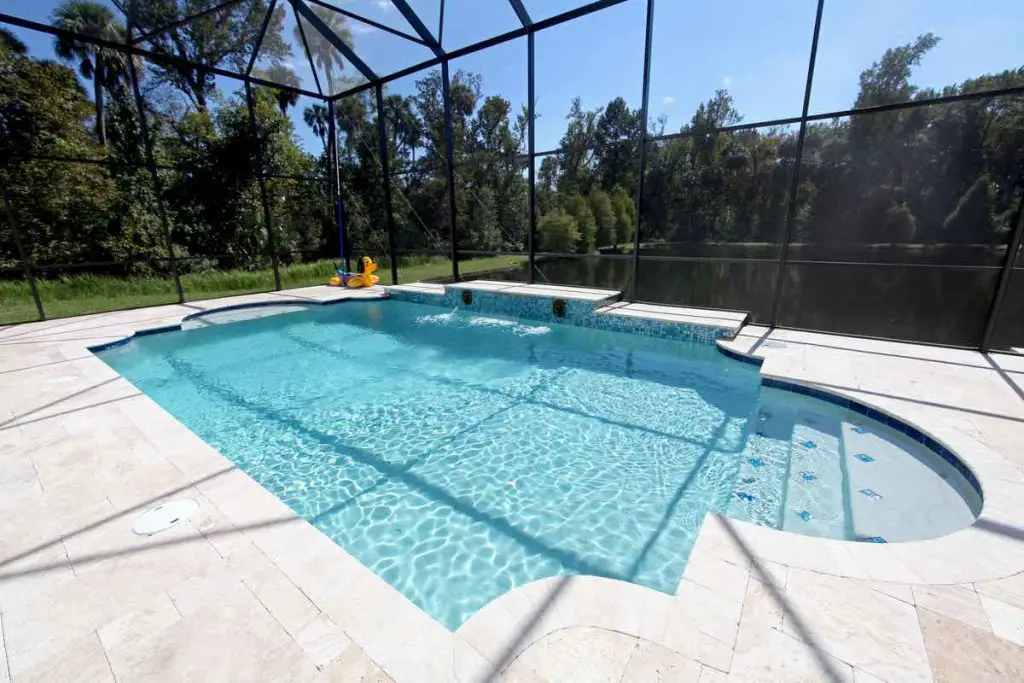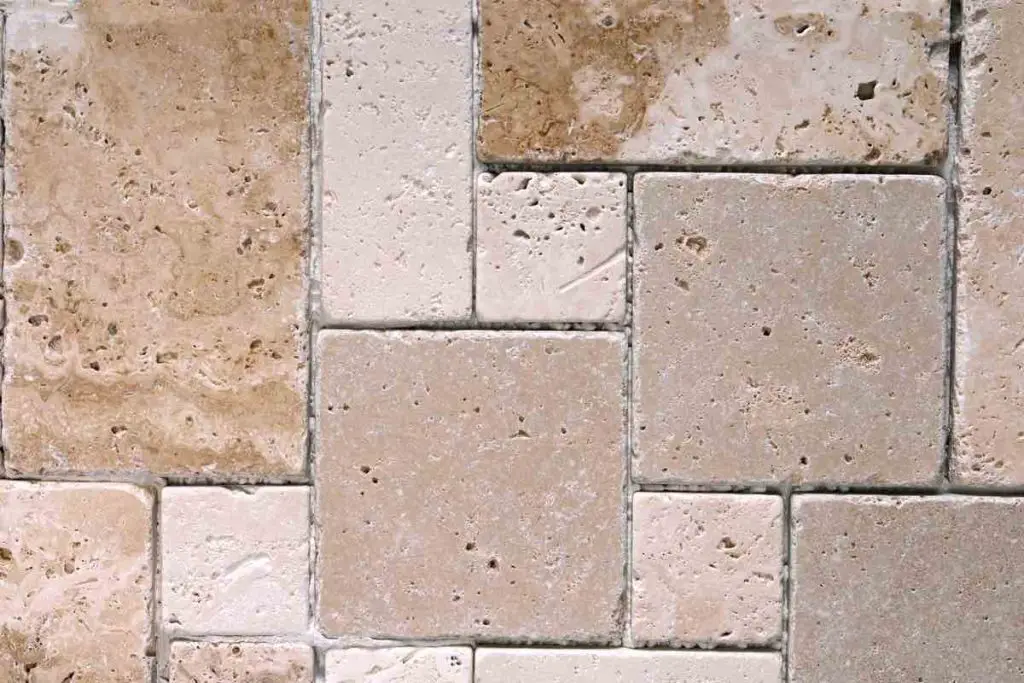Travertine is a natural stone that looks beautiful as a deck material. If you currently have a concrete pool deck, you might be wondering if you can put travertine over it to give it a more stylish appearance.
You can put travertine over a concrete pool deck. In fact, concrete is one of the best materials to use with travertine because they work so well together. You can install travertine yourself over a concrete pool deck or hire a professional to do it for you.
This article will discuss putting travertine over a concrete pool deck in greater detail. Read on if you’re eager to learn more!

Will Travertine Work Well With a Concrete Pool Deck?
Travertine will work well with a concrete pool deck once the concrete is prepared correctly. For example, you need to ensure the concrete surface is smooth so that the travertine will go on top of it without hassle.
Plus, travertine will only work well with a concrete pool deck if the concrete is fully clean. You want to remove any dirt and other loose particles from the surface. Otherwise, these particles can get in the way of the travertine, and it won’t go on as smoothly as it should.
How To Put Travertine Over a Concrete Pool Deck
Now that you know you can put travertine over a concrete pool deck, you might wonder how to do it. Thankfully, it’s relatively easy to do once you’re prepared. Plus, it will save you a lot of money if you do it yourself.
Read the steps below to learn how to put travertine over a concrete pool deck.
Cover Your Pool
Firstly, you don’t want to get any dirt in your pool’s water during this process, so you should cover it before you start; this ensures you don’t get any mortar or loose stone in the water, which can be a pain to clean. It also ensures nothing important, like a tool, falls into the pool as you work.
Prepare the Surface
You must start with a clean, smooth canvas before applying the travertine. You’ll need to sweep away all dust and grit so that nothing gets in the way. Once you’ve done that, you might want to clean the surface with water to remove any remaining dirt.
It’s also essential to make sure the concrete is smooth. For example, cracks can pose a problem, so you’ll need to fill them in using a filler. Cement filler can also prevent further cracks from forming.
Once you’ve prepared the concrete surface, you can move to the next step.
Take Measurements
It’s essential to take measurements to know precisely how much travertine you need and whether you need to cut pieces. You’ll likely need to cut the parts that will be around the pool to ensure they match the shape.
Doing this before applying adhesive (mortar) to the concrete is good to be fully prepared.
Apply Adhesive to the Concrete
The adhesive will allow the travertine to stick to the concrete, a vital step in the process. The adhesive is also commonly referred to as mortar, a binding material for things like stone and concrete.
Apply the mortar across the concrete pool deck, ensuring you cover every part. You want to ensure the layer is thick enough. Otherwise, the travertine may not bind to it very well.
Place the Travertine Over the Concrete Pool Deck
Once you have a decent layer of mortar over the concrete pool deck, you can place your travertine panels down. You’ll need to apply pressure when putting each panel down to ensure it binds well with the mortar. Make sure you cover every inch of the deck with travertine.
Let the Travertine Set and Seal It
Finally, you want to give the travertine time to set and dry. Give it at least 24 hours, but ideally, more. Once the travertine and mortar are dry, you can walk over them without causing damage. However, you should avoid standing on the travertine if you plan to seal it.
To seal it, wait until it’s fully dry. Once you’ve applied a sealer, you’ll need to wait another few days until you walk on it. Sealing travertine every one to two years is good to keep it in good condition.
What Are the Best Pool Deck Materials?
Travertine isn’t the only pool deck material. There are many other options available, so it’s good to know what some of them are. Below are some of the best pool deck materials that you should consider for your backyard:
Natural Stone
There are different types of natural stones, and travertine is one of them. Other examples include granite and marble. Travertine is one of the most popular natural stones for pool decks because it works well with water; it absorbs water quickly, so it doesn’t become slippy and unsafe.
Tiles
Tiles are also suitable for pool decks because they won’t become slippery when wet with pool water. Again, this is crucial, especially if you have young children using the pool.
Like travertine, you can place tiles over concrete. I’ve written a complete guide explaining the details you need to know about covering your existing pool deck with tiles.
Wood
Wood is another material to use for a pool deck, and it’s a cheap option. However, wood can get moldy, so you must use appropriately treated wood to avoid mold growth. Thankfully, most wood for decks sold in stores is adequately treated, so you shouldn’t have to do any additional work.
Brick
You can use brick as a pool deck because it’s durable. It is available in many colors, so you can customize your deck how you want it.
Plus, you can place bricks over concrete. So, if you have already concrete laid down, this won’t be an issue.
However, you need to ensure the concrete is clean, free from debris, and doesn’t contain any holes or large cracks.

Conclusion
You can put travertine over a concrete pool deck, but you’ll need to prepare the concrete first.
Once you’ve swept away dirt and debris and filled in any cracks, you can apply mortar over the concrete. Then, the travertine is ready to be applied!
Travertine works well over concrete and is an excellent pool deck choice because it adds beauty to the space. Plus, it doesn’t get slippy when wet, which is essential if you place it around a swimming pool. Sealing your travertine once or twice a year is also good because it keeps it in good condition.
